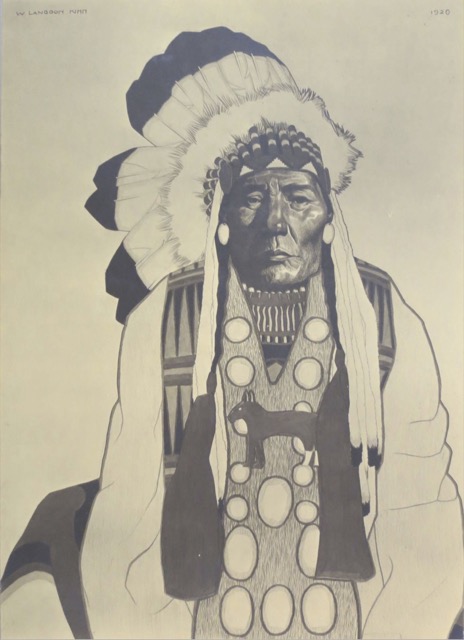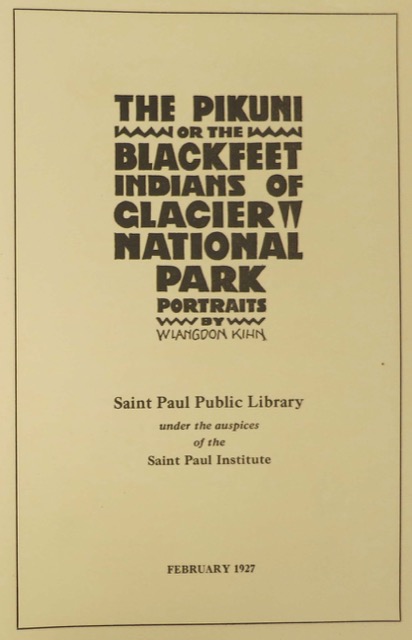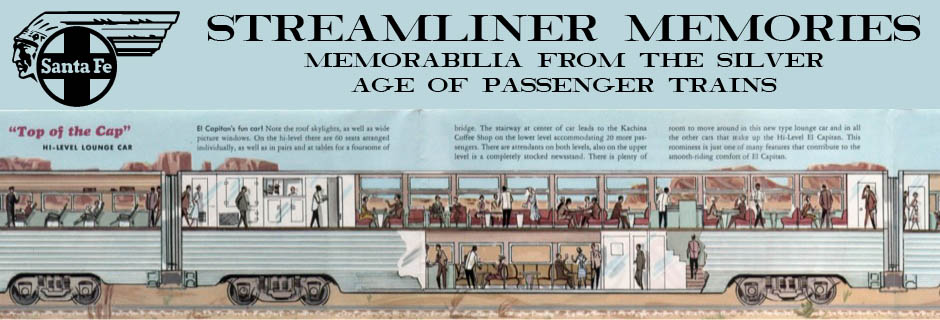Long before the Great Northern published its famous 1940 and 1958 portfolios of Winold Reiss paintings of Blackfoot Indians, it published this portfolio (which I scanned from the Spokane Public Library Northwest Collection) of Pikuni (Blackfoot) Indians by W. Langdon Kihn. Kihn’s paintings are not as compelling as Reiss’. For example, the portrait below looks like Kihn took a photograph of his subject’s face and then painted a costume around it, giving it a cartoonish-look. Reiss’ paintings also often “flattened” the clothing around the subject’s face and hands, but in a much more believable way.
 Click image to download a 2.5-MB PDF of 10 prints.
Click image to download a 2.5-MB PDF of 10 prints.
Kihn was, in fact, Reiss’ student; so why did the Great Northern print a portfolio of Kihn paintings before it did Reiss’? It may be that Reiss’ superiority worked against him in this case. The two of them, master and student, first visited the Blackfoot Indian Reservation together in the winter of 1920. Reiss painted 36 portraits; they went on exhibition in New York and were immediately purchased by Montana art collector Philip Cole, who also had many Charles Russell paintings.
Kihn’s paintings, however, were exhibited in more than 100 galleries from coast to coast, giving him much more publicity. One critic said his paintings formed “Perhaps the most stimulating exhibition of this kind that New York has ever seen.” Perhaps that critic missed the Reiss exhibition.
 I photographed this program at the Minnesota History Center, which doesn’t allow scanners, so some of the pages are slightly distorted. Click image to download a 1.1-MB PDF of the 8-page program.
I photographed this program at the Minnesota History Center, which doesn’t allow scanners, so some of the pages are slightly distorted. Click image to download a 1.1-MB PDF of the 8-page program.
In 1927, Kihn’s paintings were displayed at the St. Paul Public Library (which is physically attached to the James J. Hill Business Library). The above program is from the Great Northern Railway files at the Minnesota History Center, so the railway must have had something to do with it. I suspect the railway published Kihn’s portfolio at about the same time.
I’ll continue this story tomorrow, but in the meantime it is worth noting that, while Reiss confined his paintings of Native Americans to those on the Blackfoot Reservation, Kihn eventually painted more than 400 Indian portraits from 35 different reservations, more than any other artist. Some of his paintings were published in a book, Indian Days in the Canadian Rockies, which–judging from its title–was probably published to help publicize the Canadian Pacific and Banff National Park.
